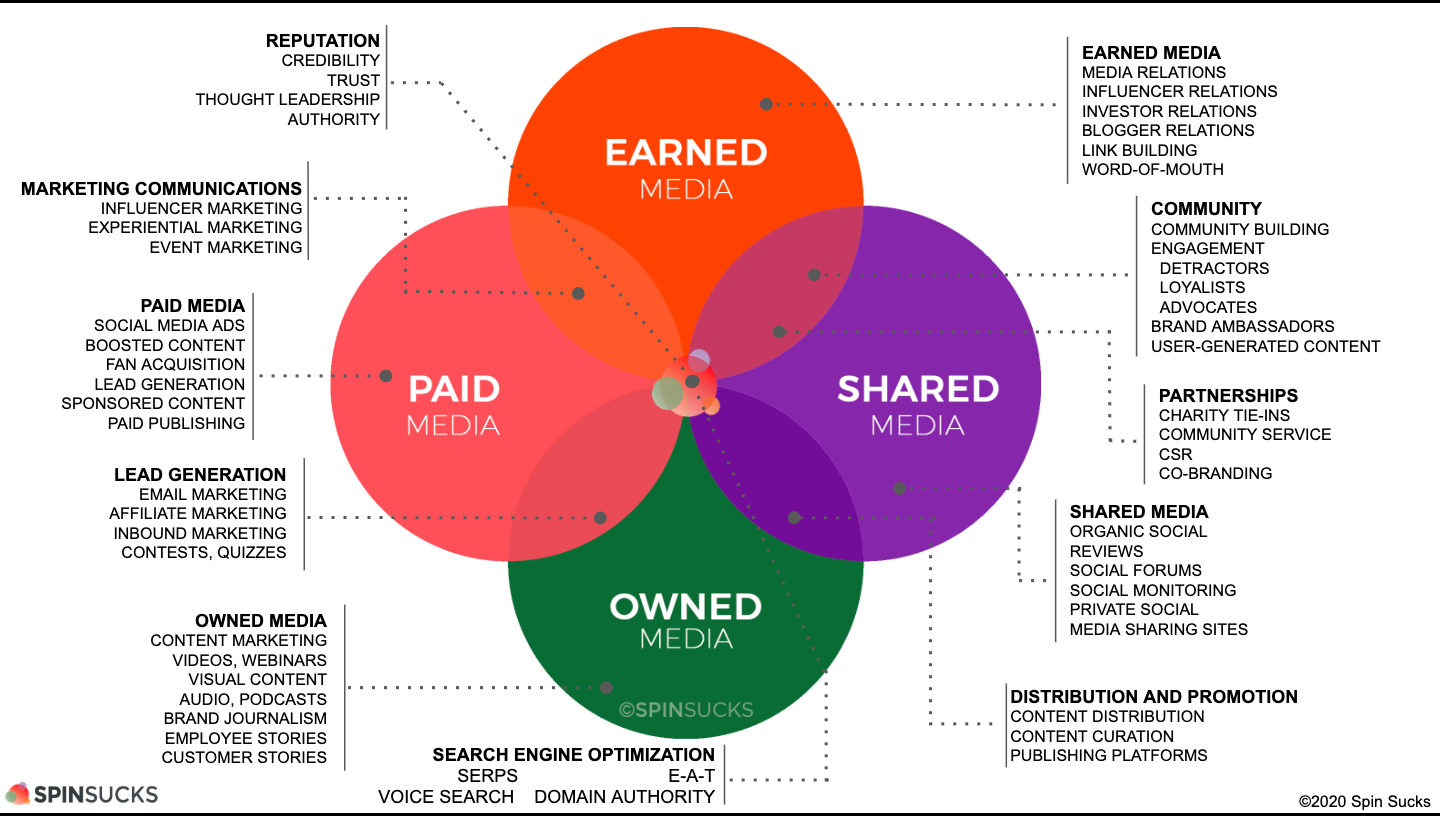
If you’re here it’s because you’ve heard about the PESO model but aren’t exactly sure what it is (and no…it’s not some sort of Mexican financial scheme, not that “peso”).
Or you know what it is but still have some questions.
Either way, you’ve come to the right place.
Spin Sucks is the home of the PESO model.
The Creation of the PESO Model
The PESO model was created by Spin Sucks founder and CEO Gini Dietrich.
It officially launched in 2014, when Spin Sucks (the book) was published.
For several years before that, it was the process used by the agency side of Spin Sucks—Arment Dietrich.
It was something we worked with every client, but we’d never written it down or named it.
Then Gini read Traction: Get a Grip on Your Business in early 2013 and learned why service businesses must have their own unique process.
And, for branding purposes, to also have a name to go along with it.
Enter the PESO model.
It gave us something easy for clients to understand—and for us to use in training new colleagues.
At the same time we were communicating it externally, we began to build the vision for Spin Sucks (to change the perception people have of the PR industry).
That’s when we realized what we were doing internally would be effective to the industry, as a whole.
So Gini included it in the book, to teach communicators about the process and how to use it in their own integrated communications programs.
Why is this important? The PESO Model was built organically from agency work. It’s built by agencies for agencies, solopreneurs, and communications teams big and small.
It’s not a theory or an idea. It’s created around what works to drive effective, measurable, and sustainable communications programs. Programs that drive real business results.
What is The PESO Model?
The PESO model is a framework for integrated communication which takes the four media types — paid, earned, shared and owned — and merges them together.
When implemented effectively it drives measurable results that directly affect business goals.
The four media types include:
- Paid Media. Paid media, in this case, doesn’t refer to big, fancy commercials and highly creative print ads. On the contrary, paid media for a PR program is social media advertising, sponsored content, and email marketing.
- Earned Media. Earned media is what you know as either publicity or media relations. It’s getting your name in print. Having a newspaper or trade publication write about you. Appearing on the noon news to talk about your product. It’s what the PR industry is typically known for, because it’s one of the few tangible things done.
- Shared Media. Shared media is also known as social media. It’s evolving as well, and continues to build beyond just marketing or customer service teams using it. Organizations have begun to use it as their main source of communications internally and externally.
- Owned Media. Owned media is otherwise known as content. It is something you own, and it lives on your website or blog. You control the messaging and tell the story in a way you want it told.
When you integrate the four media types, you may find you also have influencer engagement, partnerships, and incentive programs that extend beyond your internal walls.
And when the PESO model is working at its best, it can help you establish authority.
Authority means you’re a thought leader.
Others see you as an expert … even your competitors.
And Google links to you on the first page of results because it also sees you as an expert.
This is the golden ticket.
But how do you achieve it?
Learn why communicators must embrace the PESO Model
See a week by week breakdown of PESO in action.
Watch our FREE masterclass and learn how to implement the PESO model to achieve unparalleled communications results.